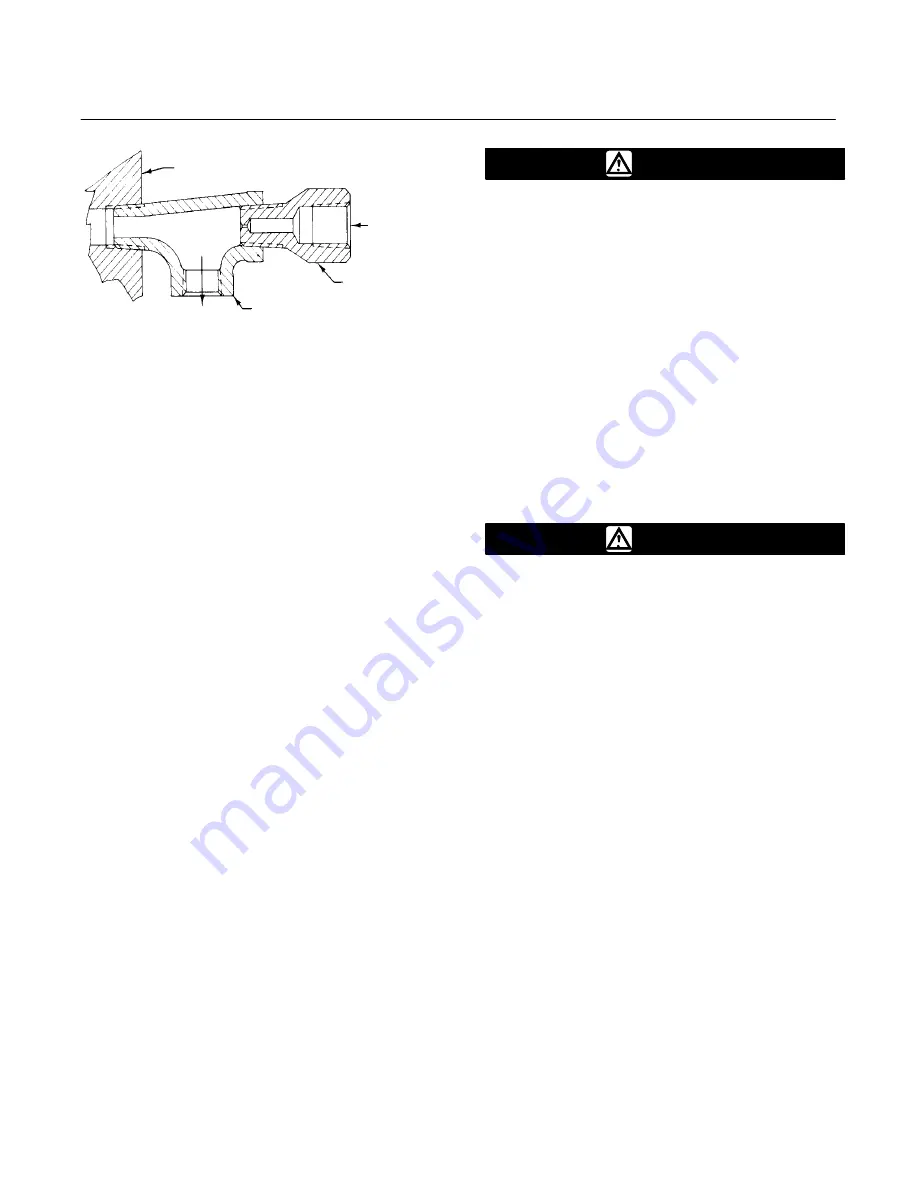
2100 and 2100E Liquid Level Switches
Instruction Manual
Form 5039
December 2005
4
A3619-1/IL
1/4-INCH NPT
OUTPUT PRESSURE
CONNECTION
1/4-INCH NPT
SUPPLY
PRESSURE
CONNECTION
BACK PLATE
(KEY 10)
STREET TEE
(KEY 34)
BLEED
ORIFICE
(KEY 35)
Figure 3. Detail of Optional Street Tee and Bleed Orifice
Common Procedures for Either Switch
The horizontal line forged on the displacer cage
indicates the approximate switching point (figures 1
and 2). When you mount the Type 2100 or Type
2100E switch, position it so that the horizontal line
corresponds to the horizontal level at which
switching is desired.
Before you install the Type 2100 or Type 2100E
switch, remove the plastic plugs from the process
connections. One of these plugs retains a paper
tube that protects the displacer and torque tube
during handling and shipping. This paper tube must
also be removed.
There are two process connections, one at the top
and one at the bottom of the cage. To mount the
switch, connect the appropriate top and bottom
process connections to the vessel using the required
size pipe. The pipe must be capable of supporting
the assembly and of withstanding the pressure
involved. Use accepted piping and welding practices
when making connections. Install isolating valves
between the vessel and cage. Plugs are furnished
for the unused process connections. However, one
of the plugs can be removed, and a bleed valve or
drain can be installed in one of the unused
connections.
Additional Procedures for Type 2100
Switch
If using natural gas as the pneumatic supply
medium, natural gas will be used in the pressure
connections of the unit to any connected equipment.
The unit will vent natural gas into the surrounding
atmosphere, unless it is remote vented.
WARNING
Personal injury or property damage
may occur from an uncontrolled
process if the Type 2100 switch supply
medium is not clean, dry air or
noncorrosive gas. If clean, dry air, or
noncorrosive gas is not used, the
switch may become inoperative and
allow the level in a process vessel to
exceed safe limits. Install a 40 micron
filter and suitable equipment to dry the
supply medium and establish a
maintenance cycle to check the filter
and equipment.
If the existing supply medium is
corrosive, make sure the tubing and
instrument components that contact
the corrosive medium are suitable
corrosion-resistant materials, or use a
noncorrosive medium.
WARNING
Personal injury or property damage
may result from fire or explosion if
natural gas is used as the supply
medium and preventative measures
are not taken. Preventative measures
may include: Remote venting,
re-evaluating the hazardous area
classification, ensuring adequate
ventilation, and the removal of any
nearby ignition sources.
Refer to figure 5 except as noted.
1. Connect a supply pressure line to the 1/4-inch
NPT female connection located in the back plate
(key 10).
2. Install an output line between the supply pressure
line and the equipment to be operated by the switch.
3. Install a street tee and bleed orifice (keys 34
and 35, figure 3) or other fixed restriction in the
supply pressure line between the supply source and
the output signal line.
4. If a remote vent is required, remove the vent
assembly (key 23) from the 1/4-inch NPT female
vent connection and install a vent line to an area
where the operating medium can be safely
exhausted.
Note
The vent line should have as large a
diameter as possible with a minimum





































